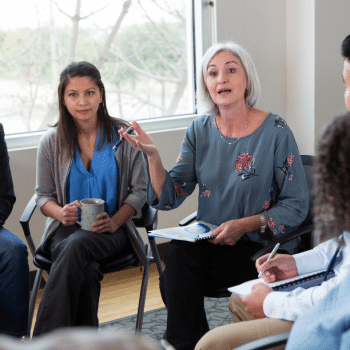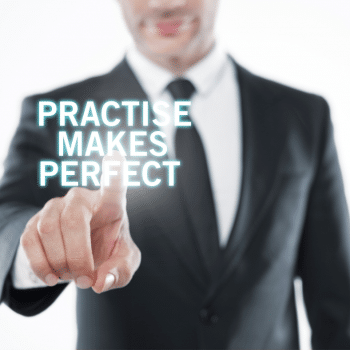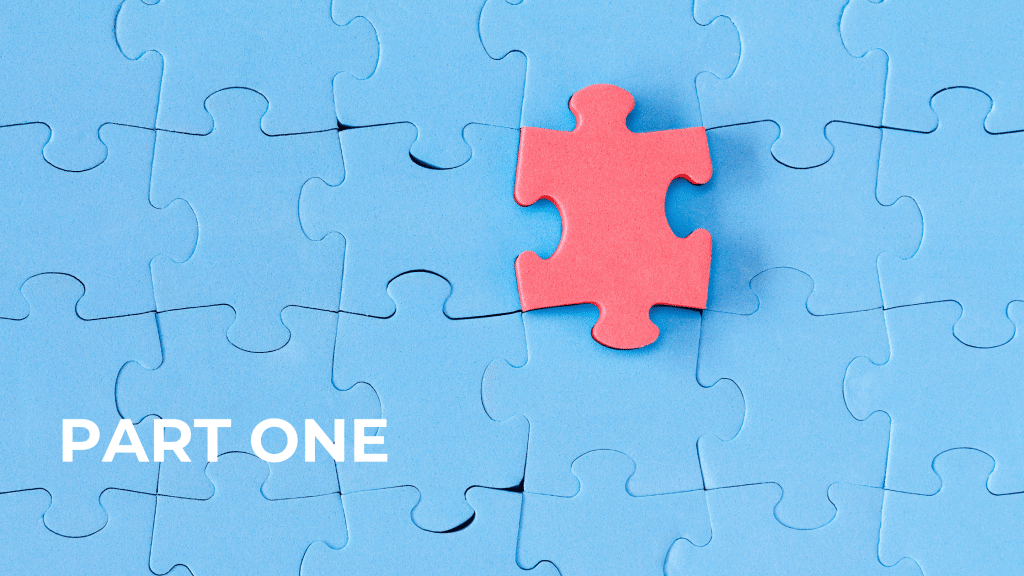In the second part of this blog, I want to help you shift your conversations to ones that get results. Conversations, where your team builds upon, instead of shutting down ideas.
In the first part, we covered some key strategies you can put into practice. In this article, we will explore two more key strategies you could use to get better results.
Model and create the conditions for expected behaviours to flourish
In his December 2020 White Paper, Paul Lawrence explains leaders need to move away from ‘telling’ when they think they are right and get better at engaging in ‘dialogue’.
He says ‘when we engage in dialogue we come prepared to do two things:
- Listen without prejudice to what the other person is saying, suspending our convictions, opinions and beliefs.
- Say what needs to be said – respectfully’.
He clarifies dialogue differs from a skilled conversation or disciplined debate described in the Map of Conversations in the first part of this series of articles.
Dialogue is especially appropriate when navigating change, seeking to foster innovation or build trust. These are contexts where sharing of information (we talk- we listen) is more important than conveying information (I talk – you listen).
How often have you been in a room with what Lawrence describes as a ‘facipulator’?
A facipulator is a facilitator or leader who dresses manipulation up as facilitation. Someone who already knows the change intended to be achieved, with little interest in involving others to shape the change required.
If the situation is complex, taking control will not work. It is possible to influence or nudge required change but only when you are curious and open to other perspectives.
Instead of being the expert, try to model the behaviours you want to see from others. Create opportunities for genuine and creative dialogue to emerge from conversations. You can do so by making space for dialogue in busy diaries and on busy meeting agendas.
Think about the physical space, what could intrude from outside? Will people be physically and psychologically comfortable? Reflect on whether past interactions mean people feel safe to speak up. If not, you need to work on creating psychological safety first.
Remember incidental talk can be valuable.
Talk that happens in the kitchen, in the lift or either side of meetings is valuable as are online conversations via Yammer or a Teams channel. The seeds planted in these conversations often feed into creative dialogue in more formal interactions.
Be careful to nurture rather than stifle opportunities for incidental interactions between people and groups. Again keep in mind the value of multiple perspectives and how the best ideas can develop from unexpected collaborations.
Explore ‘big’ questions about meaning alongside routine and urgent issues
Always focusing on routine and urgent issues in meetings can dry up more than conversation.
Morale and organisational commitment also begin to wither.
Provide people with opportunities to find and maintain connections to organisational purpose and big picture strategy.
Allow time for strategic conversations in regular meetings, either at each meeting or on a rotational basis.
Another option is to schedule meetings for this specific purpose.
Remember environment matters when it comes to creative dialogue.
Effective leaders make time
In a previous role, I led a group with many introverts and people reluctant to speak up in front of Executives.
The group engaged in useful dialogue and developed trust over time by consistently using venues and facilitation processes where people felt comfortable.
Use of break out groups, post-it notes, butcher paper or digital polls and brainstorming tools, enabled many different perspectives to inform whole room conversations.
The meeting room had many tables where people could have small group discussions. It was okay for talk to stray into areas important to each small group.
These opportunities to allow people to explore the big picture only happened because I prioritised them as the leader. At first, people left routine task and non-critical issues to participate because they knew I thought it was necessary. Over time, they came because of their value.
Build on what you’ve been practising
Which concepts from the last article did you put into practice?
Which one here would make an even bigger difference to the quality of your conversations?
Stay brave and keep sharing any positive results from your experiments with others and why you want to keep experimenting.
Continue seeking feedback and building your confidence using your chosen technique in more critical situations.
Share this article and ask for more perspectives on what would make even more difference to your conversations.
And, if you need a hand along the way, reach out, and we can explore how I could help. You can find out more about me at Leadership Coach in Brisbane, QLD | Susanne Le Boutillier
Want more strategies to unleash an unstoppable team.
Join my mailing list to access the free download Five Powerful Strategies to Unleash and Unstoppable Team.











